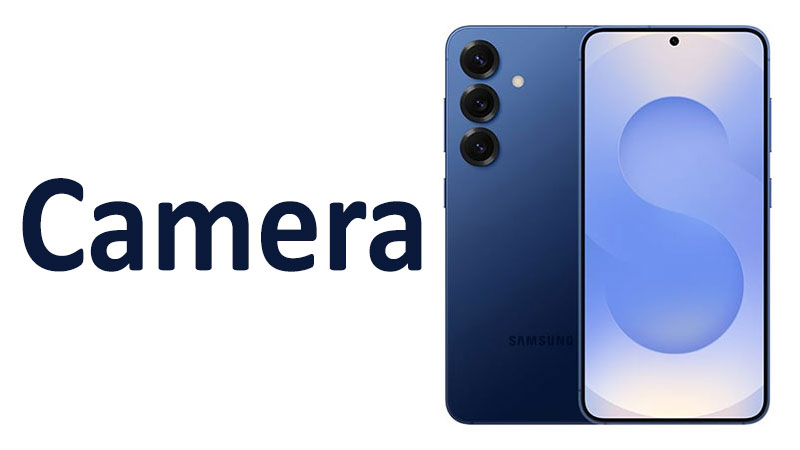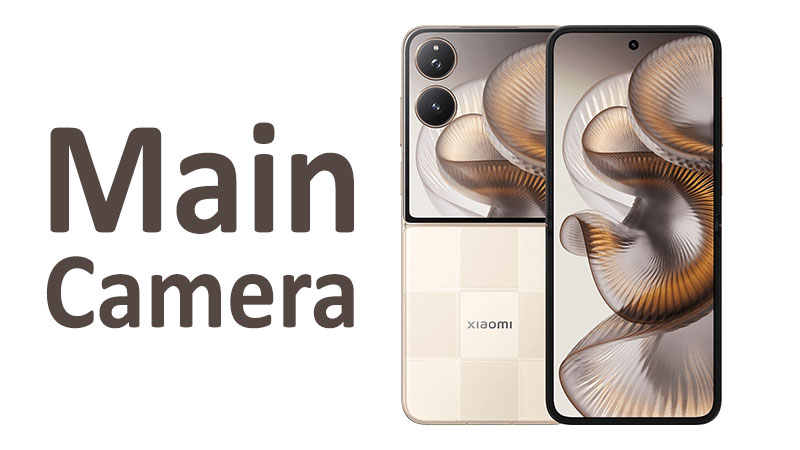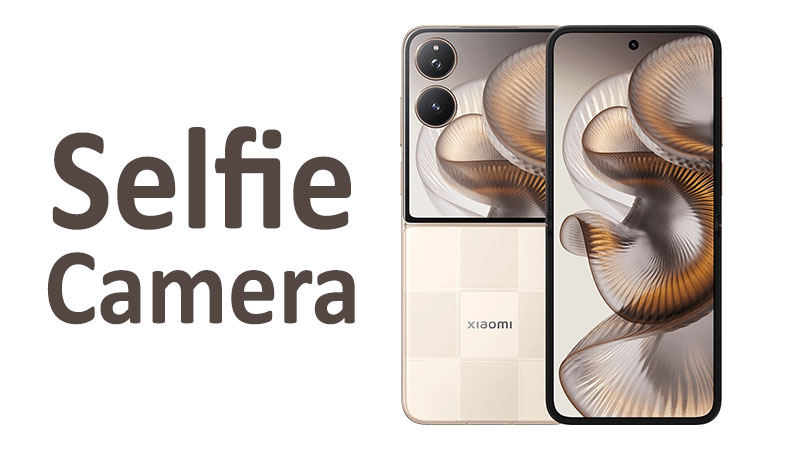The Samsung Galaxy S25 camera system sets a new benchmark for mobile photography. It combines cutting-edge hardware with intelligent software processing. Choosing a new flagship phone heavily depends on its imaging performance. This comprehensive review explores every angle of the Galaxy S25 camera. We cover specifications, real-world performance, and vital comparison points. This article is your ultimate guide to the S25’s photographic power. We aim to help you make the best purchase decision.
A Detailed Examination of the Galaxy S25 Camera Specs and Performance
The Samsung Galaxy S25 features a versatile triple-lens array. This system handles almost any shooting environment. The three rear lenses are perfectly balanced. They ensure professional results from wide landscapes to distant subjects. We dive into the details of each specific lens below. Transition words guide us through this technical analysis.
The Core Imaging System: 50MP Wide Sensor
The primary camera remains the heart of the S25 experience. It uses a high-resolution 50 MP sensor. This large sensor captures incredible detail. It features a bright f/1.8 aperture. This aperture excels in low-light conditions. The focal length is a standard 24mm equivalent. This offers a true-to-life perspective.
The sensor size is 1/1.56 inches. Furthermore, its individual pixels measure 1.0µm. These dimensions contribute to excellent light gathering. Crucially, the camera includes Dual Pixel PDAF technology. This feature provides lightning-fast autofocus performance. Optical Image Stabilization (OIS) is also integrated. Consequently, OIS ensures your photos remain sharp, even when your hand shakes. This combination of hardware guarantees superior still photography.
Specialized Comparison: The sensor size and resolution are a known Samsung formula. It delivers reliable, consistently excellent results. It competes directly with the latest Apple and Google flagships. However, the S25 focuses on enhanced processing. Its color science delivers more vibrant output compared to the muted tones of competitors.
Precision and Reach: The 10MP Telephoto Lens
The Samsung Galaxy S25 offers dedicated optical zoom capabilities. It uses a 10 MP telephoto lens. This lens provides 3x optical zoom. The focal length is equivalent to 67mm. This brings distant subjects much closer. This is done without any loss of quality. The aperture is f/2.4. This is standard for a dedicated zoom lens.
Moreover, the sensor size is 1/3.94 inches. The pixels are 1.0µm in size. This ensures fine detail capture even at a distance. The telephoto lens also includes PDAF for quick focusing. Furthermore, it features OIS stabilization. OIS is essential for stabilizing magnified images. The 3x optical zoom is perfect for portraits. It also works well for capturing architecture details.
Specialized Comparison: While some competitors push for 5x or 10x periscope zoom, the S25 prioritizes portability. The 3x optical lens delivers superb quality and speed. It is a workhorse for most common zooming needs. Its physical stability is a key advantage for clear zoomed shots.
Expanding the View: 12MP Ultrawide Experience
The third camera provides a vast, 120˚ field of view. This ultrawide lens captures expansive scenes. Its resolution is 12 MP. The aperture is a fast f/2.2. The focal length is an ultra-short 13mm. This is ideal for dynamic shots and landscapes.
The sensor is 1/2.55 inches. Interestingly, the pixels are a large 1.4µm. This is a significant detail to consider. Larger pixels improve low-light ultrawide performance dramatically. Samsung also includes its Super Steady video feature here. Super Steady video ensures smooth, shake-free footage. This is essential for action shots and moving subjects. The ultrawide camera delivers impressive corner-to-corner sharpness.
Specialized Comparison: The S25 uses a larger pixel size for its ultrawide than the main sensor. This shows a commitment to low-light quality. Many competitors often use smaller, lower-quality sensors on their ultrawide lens. The S25 avoids this common compromise entirely.
Advanced Video Capabilities: 8K and Pro Features
The video specifications of the Samsung Galaxy S25 are top-tier. It supports up to 8K resolution. Users can film 8K video at 24 or 30 frames per second. This provides incredible future-proofing for your content. 8K footage allows for major cropping in post-production. It still retains 4K quality afterward.
Furthermore, the phone offers 4K recording at 30 or 60fps. Full HD 1080p recording is highly versatile. It supports 30, 60, 120, and 240fps slow-motion modes. Video quality is boosted by 10-bit HDR support. HDR10+ support adds exceptional dynamic range. The phone records clear stereo sound. Gyro-EIS provides electronic image stabilization. This creates cinema-quality stabilization. The combination of OIS and Gyro-EIS is very powerful.
Important: Shooting in 8K requires substantial storage space. Consequently, most users will find 4K@60fps more practical for daily use. The 10-bit HDR and HDR10+ are crucial features. They are key for professional-grade mobile video content creation. These features set a high bar for the industry.
Auxiliary Features and Computational Photography
The S25 camera app is feature-rich and intuitive. It includes the popular Best Face feature. Best Face uses AI to choose the most flattering look for each person. The phone has an LED flash for dark environments. Auto-HDR intelligently balances highlights and shadows in challenging light. Panorama mode captures extremely wide landscape shots with great stitching.
The computational photography suite is Samsung’s secret weapon. It drives color science and dynamic range optimization. The S25 delivers vibrant, ready-to-share images directly. The overall user experience is intuitive. It allows for quick adjustments and easy access to Pro modes. These software features define the final image output. Samsung’s optimization minimizes noise while maximizing detail capture.
The Self-Portrait Expert: 12MP Front Camera
The front-facing camera is equally impressive in its capabilities. It is a 12 MP wide-angle lens. The aperture is a fast f/2.2. The focal length is 26mm. This is perfect for solo or group selfies. Its sensor size is 1/3.2 inches. Moreover, the individual pixels measure 1.12µm.
The key feature is Dual Pixel PDAF. This ensures fast and accurate focus for selfies. This eliminates frustratingly blurry faces. The front camera supports HDR and HDR10+. This guarantees bright, detailed self-portraits even against bright backgrounds. Video recording is available at 4K resolution. This is possible at 30 or 60fps. It also supports 1080p at 30fps. The S25 selfie camera is ideal for vloggers. It also suits anyone serious about their self-image capture quality.
Key Takeaway: The inclusion of Dual Pixel PDAF on the front camera is a major win. It guarantees sharper results than fixed-focus front cameras. This feature elevates the S25’s vlogging and streaming potential significantly.
Specialized Comparisons: S25 Camera Versus the Competition
Understanding the S25 requires placing it in context. We must compare its specs to its predecessor. We also consider its main market rivals. This comparison highlights Samsung’s strategic decisions for the S25 line.
S25 vs. S24: A Step-by-Step Sensor Evolution
The S25 specifications show refinement, not a radical change. The main 50MP sensor size remains consistent. This ensures reliable and familiar performance. The real difference is often found in the software tuning and chip power. Samsung typically improves its Nona-binning process generation over generation. This creates better 12MP binned images with more detail.
The telephoto and ultrawide lenses also see strategic tweaks. The most important ultrawide change is the large 1.4µm pixel size. This is a significant low-light improvement over the S24 ultrawide. The S25 prioritizes light capture on the ultrawide camera. This makes it much more useful after dark or indoors. Video capabilities are largely similar in resolution. However, the S25 may offer more stable 8K recording. This is due to enhanced chip processing power. Overall, the S25 offers a more mature, polished experience. It is not a revolutionary jump, but a careful, impactful evolution.
S25 vs. Key Competitors: Pixel and iPhone Rivalry
The Samsung Galaxy S25 directly challenges the Google Pixel and Apple iPhone flagships. Google relies heavily on computational photography to enhance its photos. The iPhone emphasizes color accuracy and video ecosystem consistency. Samsung’s strength is sheer hardware versatility and features. The S25 provides a dedicated 3x optical zoom lens. This gives it a physical advantage over standard telephoto systems.
Google Pixel often beats competitors in extreme low-light stills. However, the S25’s large ultrawide pixels narrow this gap considerably. The iPhone offers superior video ecosystem integration and consistency. Yet, the S25’s 8K@30fps and HDR10+ specs are superior on paper. The ultimate choice depends on user preference and workflow. The S25 is for the user who demands maximum flexibility. It offers the best blend of hardware, zoom, and advanced video prowess. It is arguably the most feature-complete camera system available today.
Pros and Cons: Weighing the S25 Camera System
The Samsung Galaxy S25 camera is undeniably powerful. However, it is important to analyze its advantages and disadvantages. This helps potential buyers form a balanced perspective on their investment.
Key Strengths (Pros)
The system features Dual Pixel PDAF on both main and selfie cameras. This delivers extremely fast focusing every time. The dedicated 3x optical zoom lens offers true lossless magnification. It is excellent for clear, detailed close-ups and portraits. Video performance is industry-leading and highly versatile. It supports 8K@30fps and advanced 10-bit HDR formats. The ultrawide lens uses a generous 1.4µm pixel size. This significantly improves low-light ultrawide captures dramatically. Super Steady video ensures exceptional smoothness. It is ideal for handheld action footage and vlogging. The phone’s OIS system is robust. It covers both the wide and telephoto lenses. This provides stability for both photos and videos. Samsung’s color science creates vibrant, shareable images immediately. The overall versatility of the three-lens system is hard to beat. It allows photographers to tackle any scene confidently.
Potential Weaknesses (Cons)
The main sensor size of 1/1.56″ is excellent. However, it is not the largest sensor on the market. Some specialized competitors use physically larger sensors. This could potentially give them an edge in extreme, dark low-light scenarios. The standard S25 model only offers 3x optical zoom. Enthusiasts might miss a longer 10x periscope zoom lens. This higher zoom is typically reserved for the Ultra model lineup. Samsung’s default processing can sometimes look overly vivid or saturated. Some users prefer a more natural, muted color palette. The 8K video files are enormous in size. Users must carefully manage their internal storage space. Also, the level of stabilization in the 8K mode can sometimes be limited. The phone can generate noticeable heat during extended 8K recording sessions.
Essential Buyer’s Guide: Important Points to Consider
A potential buyer must look beyond the raw megapixel count. The S25 camera system is complex and advanced. These are the most important aspects you need to understand before purchase.
Understand the Power of Dual Pixel PDAF
This technology is not just a specification detail. It is a major performance upgrade in daily use. Dual Pixel PDAF means every pixel assists with focusing. It translates directly into faster, more accurate shutter speeds. You get sharp images even of quickly moving subjects. This is critical for parents and pet owners capturing action. The feature is included on the main wide and the selfie camera. This ensures great results no matter which lens you choose to use.
The True Value of 3x Optical Zoom
Do not confuse optical zoom with digital zoom. Digital zoom simply crops into an image. This drastically reduces the image quality and detail. Optical zoom uses physical glass elements to magnify the scene. The 3x optical zoom on the S25 is true magnification. It preserves all the image detail and clarity. This lens is invaluable for high-quality portraits. It prevents the barrel distortion often seen with wide-angle portrait shots.
Storage Requirements for High-Resolution Video
The S25 captures stunning 8K video footage. However, this comes at a high cost to internal storage. An average minute of 8K footage can consume vast amounts of memory very quickly. If you plan to shoot a lot of video, choose a higher storage capacity option. Alternatively, commit to regularly backing up your files immediately. 4K@60fps offers a superb balance. It provides high quality while conserving precious storage space efficiently.
Leveraging Pro and Expert RAW Modes
The S25 is not just a simple point-and-shoot camera. Samsung includes robust Pro and Expert RAW modes. These modes give advanced users full creative control. They can manually adjust ISO, shutter speed, and white balance settings. Expert RAW captures a multi-frame RAW image. This preserves the maximum amount of detail and dynamic range. Learning these professional modes unlocks the camera’s full potential for editing.
The Low-Light Ultrawide Advantage
The ultrawide sensor is often neglected by other smartphone brands. Samsung made a key hardware choice here for the S25. The 1.4µm pixels significantly improve light capture efficiency. This results in cleaner ultrawide night shots. You can now take dramatic night cityscape photos. These photos will have much less noise and more clarity. This is a noticeable improvement over many previous Galaxy generations. The consistency in quality across all three lenses is a significant selling point.
The Significance of 10-bit HDR and HDR10+
These specifications are vital for videographers. They indicate a massive improvement in color depth. Standard video records in 8-bit color. 10-bit color captures over a billion colors. This is 64 times more than 8-bit. This allows for smoother gradients and more accurate color reproduction. It is especially useful when filming high-contrast scenes. For instance, sunsets or bright city lights look far better.
Conclusion: Making an Informed Decision
The Samsung Galaxy S25 camera system is a comprehensive, high-performance package. It represents the pinnacle of current mainstream smartphone imaging. The hardware is exceptionally well-balanced across all three lenses. The 50MP main sensor delivers stunning detail and speed. The 3x telephoto provides useful, clear reach. The improved 12MP ultrawide excels in low-light environments.
Video capabilities are best-in-class and highly versatile. They offer 8K resolution and advanced HDR formats like HDR10+. The front-facing camera’s inclusion of Dual Pixel PDAF ensures sharp, clear selfies every single time. The S25 does not rely on a single breakthrough feature. Instead, it offers reliable excellence across the board for both stills and video.
Buyers should select the S25 for its versatility. They should also choose it for its professional video features. The system is designed for both casual users and serious content creators. While some specialized competitors may offer slightly larger sensors, the S25 provides the best all-around mobile camera experience. It is a wise investment for anyone prioritizing photography and videography. This phone solidifies Samsung’s position as a dominant market leader.
Frequently Asked Questions (FAQ) about the Galaxy S25 Camera
Does the Galaxy S25 support 8K video recording?
Yes, the Galaxy S25 supports high-resolution 8K video recording. It can capture footage at both 24 and 30 frames per second. This allows for extremely detailed video.
What is the optical zoom capability of the S25?
The S25 features a dedicated 10MP telephoto lens. This lens provides a true 3x optical zoom. This magnification retains full image quality and clarity.
What is Dual Pixel PDAF and where is it used?
Dual Pixel PDAF means that the focus mechanism is extremely fast and accurate. It is used on both the main 50MP wide camera and the 12MP selfie camera.
Did Samsung improve the ultrawide camera for low light?
Yes, the 12MP ultrawide camera on the S25 features large 1.4µm pixels. This hardware improvement significantly enhances its performance in darker conditions.
Is the S25 suitable for professional videography?
Absolutely. With 4K@60fps, 10-bit HDR, HDR10+, and Gyro-EIS stabilization, the S25 offers pro-grade video features. It is excellent for content creators.



